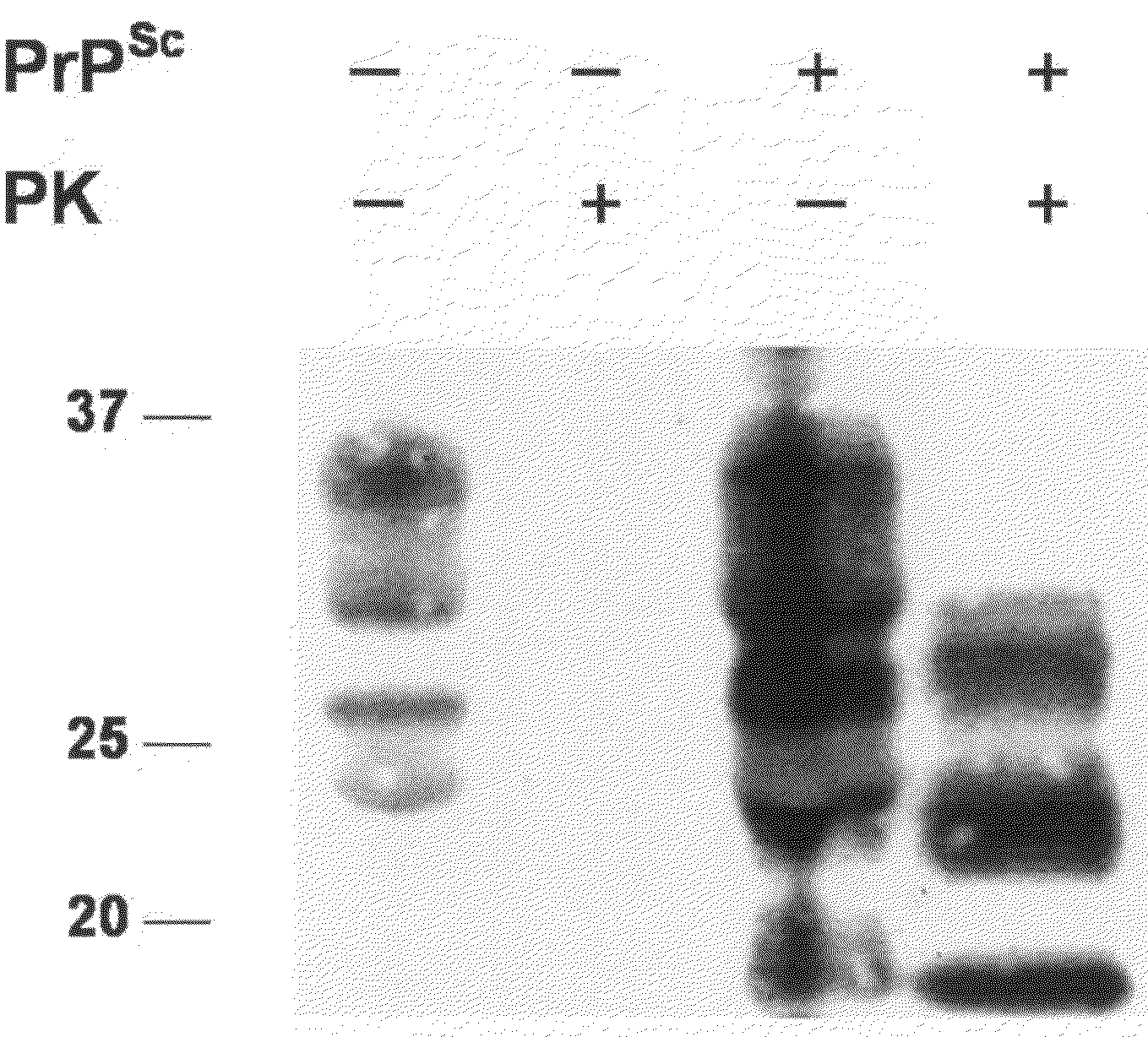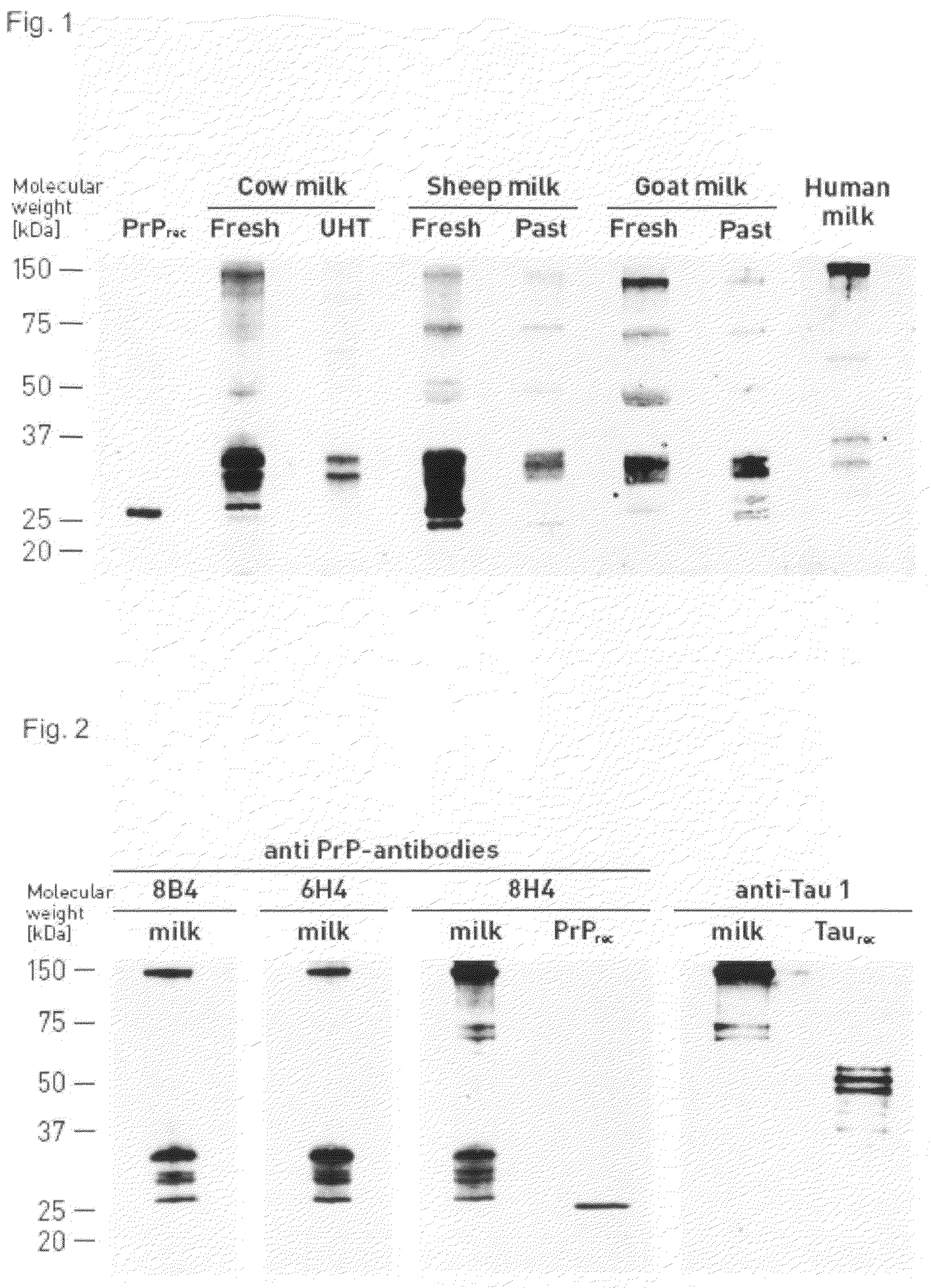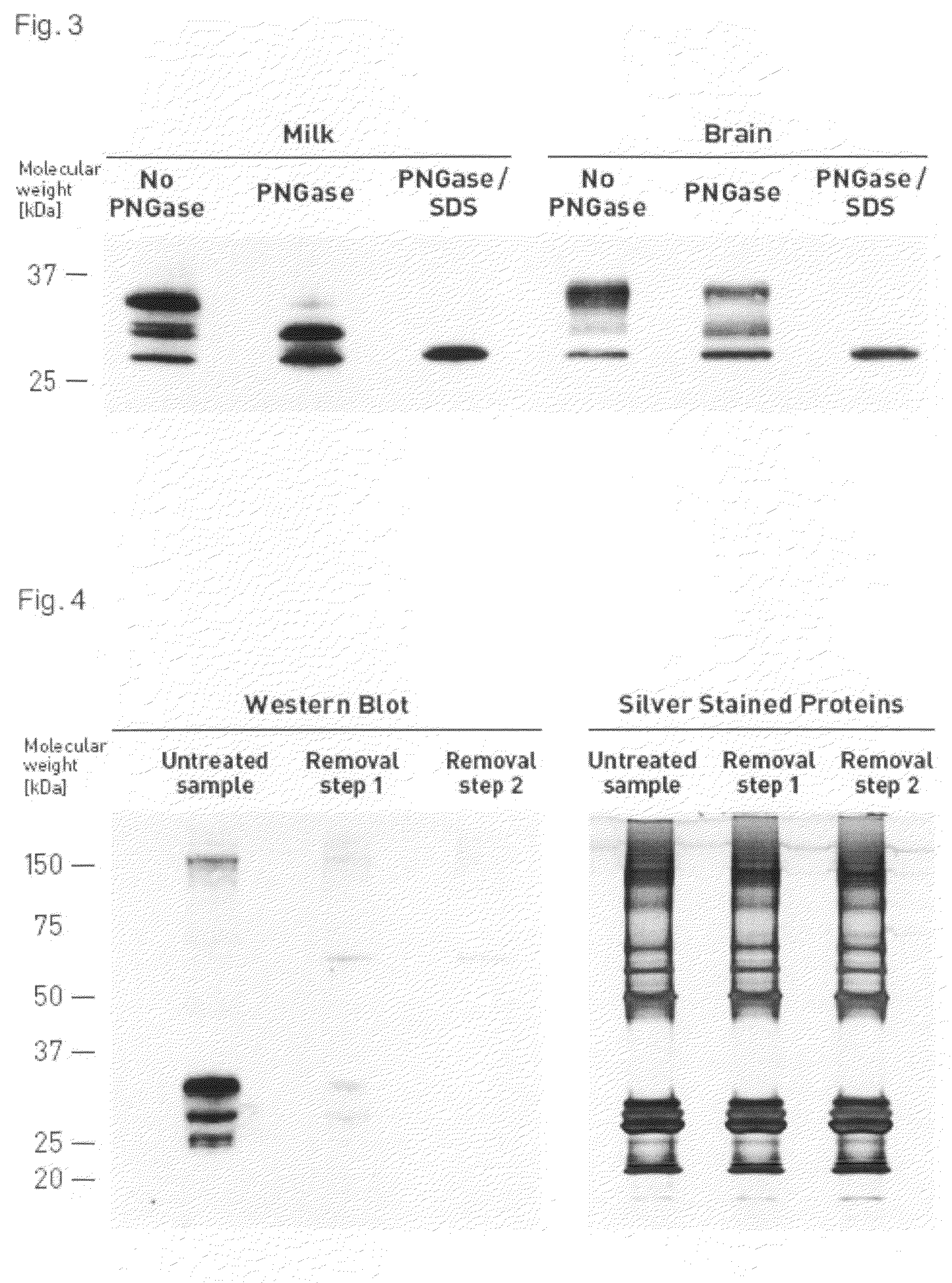Identification of Prion Proteins in Milk
- Summary
- Abstract
- Description
- Claims
- Application Information
AI Technical Summary
Benefits of technology
Problems solved by technology
Method used
Image
Examples
example 1
Detection of Native PrPC in Milk of Human and Animals
[0115]A volume of 10 ml milk (fresh or UHT (standard ultra high temperature treatment) or pasteurised) was centrifuged at 3000 g for 10 min to ensure the complete removal of cells. The cell-free and fat-poor milk supernatant was incubated with 800 μl of 500 mM EDTA solution pH 7.4 and stirred for 30 min in the presence of 50 μl PrioTrap™ matrix (Ni Sepharose™ High Performance (code number 17-5268-01, 25 ml, 17-5268-02, 100 ml) from Ge Healthcare (Amersham Biosciences Europe GmbH, Industrienstrasse 30, CH-8112 Otelfingen). The matrix was washed four times at RT with 10 ml washing solution containing 100 mM sodium phosphate, 20 mM Tris, 10 mM imidazol buffer pH 8. To elute the proteins from the matrix, 15 μl sample buffer (XT sample buffer, Biorad, Biorad Laboratoires Nenzlingerweg 2, 4153 Reinach, CH) were added and heated for 10 min at 70 C.°. The matrix containing sample buffer was loaded on a Criterion XT 12% Precast gel (Biorad...
example 2
Specific Binding of Anti-PrP Monoclonal Antibodies to Milk PrPC
[0117]To confirm the specificity of the immunochemical detection of PrPC in milk different anti-PrP monoclonal antibodies were compared which are directed against non-overlapping epitopes (FIG. 2).
[0118]Fresh cow milk samples were treated as described for example 1 except that various first antibodies were used for the detection of PrPC in fresh cow milk: PrP-mab 8B4 (alicon AG, see above), mAB 6H4 (Prionics AG, Switzerland; Korth et al. Nature, 390, 74-77, 1997), and PrP-mab 8H4 (alicon AG, Product number A0002; Schlieren, Switzerland; Zanusso et al., Proc. Natl. Acad. Sci. USA 95, 8812-8816, 1998). A tau-1 protein-specific monoclonal antibody (Chemicon International, Inc., California USA) was used as a negative control. PrP-mab 8B4 binds to residues 37-44 within the flexibly disordered amino-terminal domain of mouse PrP; mAB 6H4 targets residues 144-152 within helix 1 of the globular carboxy-terminal domain; and PrP-m...
example 3
Identification of PrP-Glycoforms by PNGase Treatment of Milk and Brain PrPC
[0119]Identification of PrP-glycoforms was performed with PNGase (FIG. 3), an enzyme that cuts off oligosaccharides from N-linked glycoproteins, e.g., the two N-linked sugars of PrPC (Haraguchi et al., Arch. Biochem. Biophys. 274, 1-13, 1989).
[0120]For PNGase treatment prion protein extracted from 10 ml fresh cow milk as described in example 1 or 10 μl of 1% (w / v) cow brain homogenate was incubated under shaking for 12 h at 37 C.° in buffer containing 100 mM sodium phosphate, 10 mM Tris, 20 mM Imidazol 1% NP-40, 1% MEGA-8, pH 8, and 1.5 units of N-Glycosidase F (Roche, Mannheim, Germany). Under more stringent cleavage conditions, proteins were denatured by heating for 10 minutes at 100° C. in the presence of 0.5% SDS before treatment with 4 units of N-Glycosidase. Proteins were analyzed by SDS polyacrylamide gel electrophoresis and Western Blotting using PrP-mab 8B4 antibody as described in example 1. After ...
PUM
 Login to View More
Login to View More Abstract
Description
Claims
Application Information
 Login to View More
Login to View More - R&D
- Intellectual Property
- Life Sciences
- Materials
- Tech Scout
- Unparalleled Data Quality
- Higher Quality Content
- 60% Fewer Hallucinations
Browse by: Latest US Patents, China's latest patents, Technical Efficacy Thesaurus, Application Domain, Technology Topic, Popular Technical Reports.
© 2025 PatSnap. All rights reserved.Legal|Privacy policy|Modern Slavery Act Transparency Statement|Sitemap|About US| Contact US: help@patsnap.com



